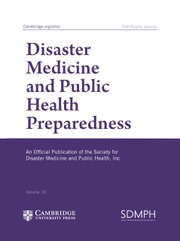No CrossRef data available.
Article contents
Online Social Interaction for COVID-19 in Asia
Published online by Cambridge University Press: 22 November 2024
Abstract
While prior studies have barely explored social interaction for COVID-19 across Asia, this study highlights how people interact with each other for the COVID-19 pandemic among India, Japan, and South Korea based on social network analysis by employing NodeXL for Twitter between July 27 and July 28, 2020. This study finds that the Ministry of Health and Prime Minister of India, news media of Japan, and the president of South Korea play the most essential role in social networks in their country, respectively. Second, governmental key players play the most crucial role in South Korea, whereas they play the least role in India. Third, the Indian are interested in COVID-19 deaths, the Japanese care about the information of COVID-19 patients, and the South Korean focus on COVID-19 vaccines. Therefore, governments and disease experts should explore their social interaction based on the characteristics of social networks to release important news and information in a timely manner.
- Type
- Original Research
- Information
- Copyright
- © The Author(s), 2024. Published by Cambridge University Press on behalf of Society for Disaster Medicine and Public Health, Inc


